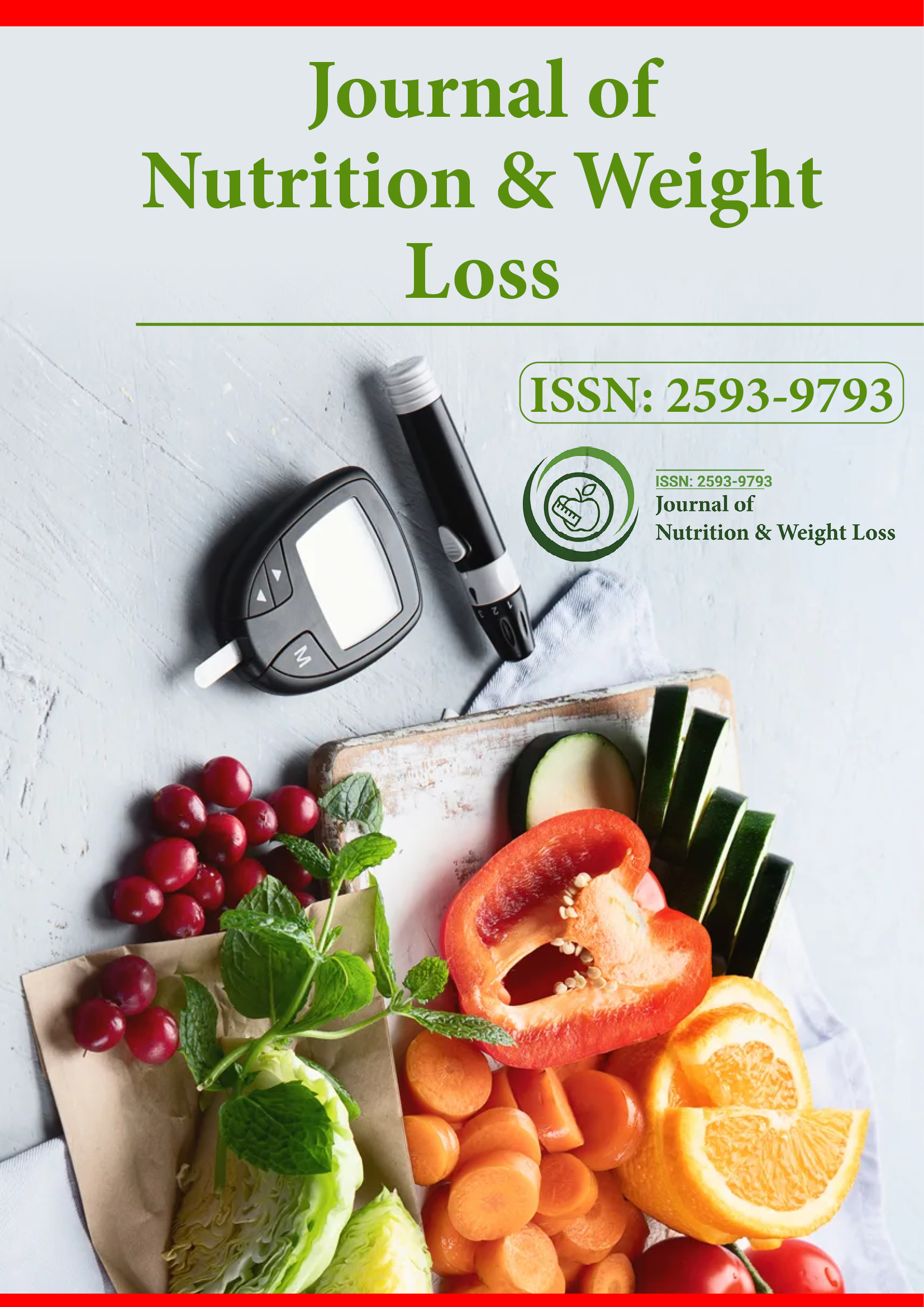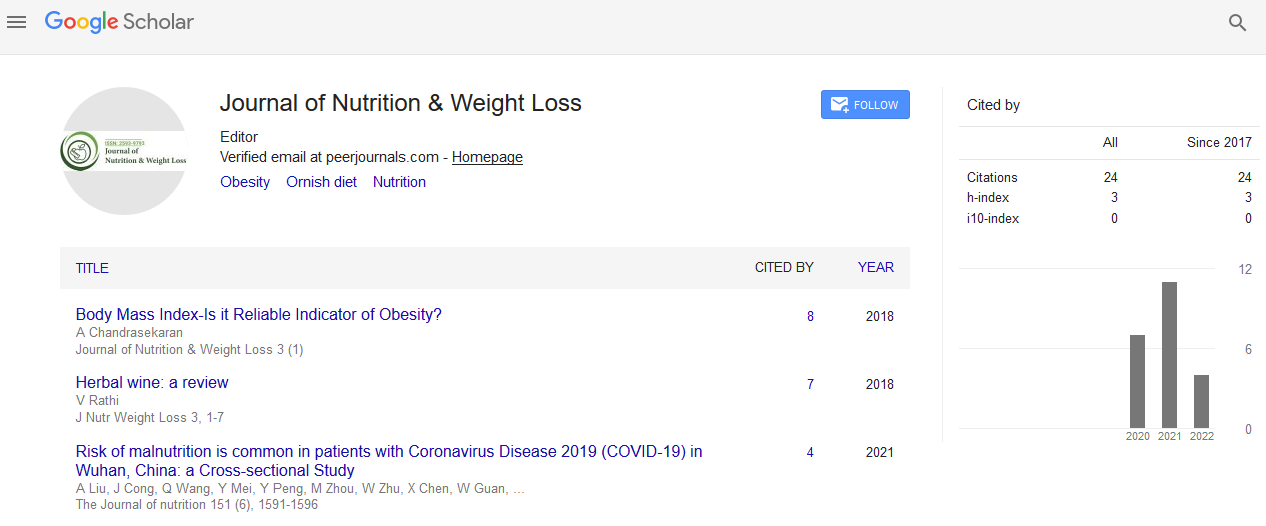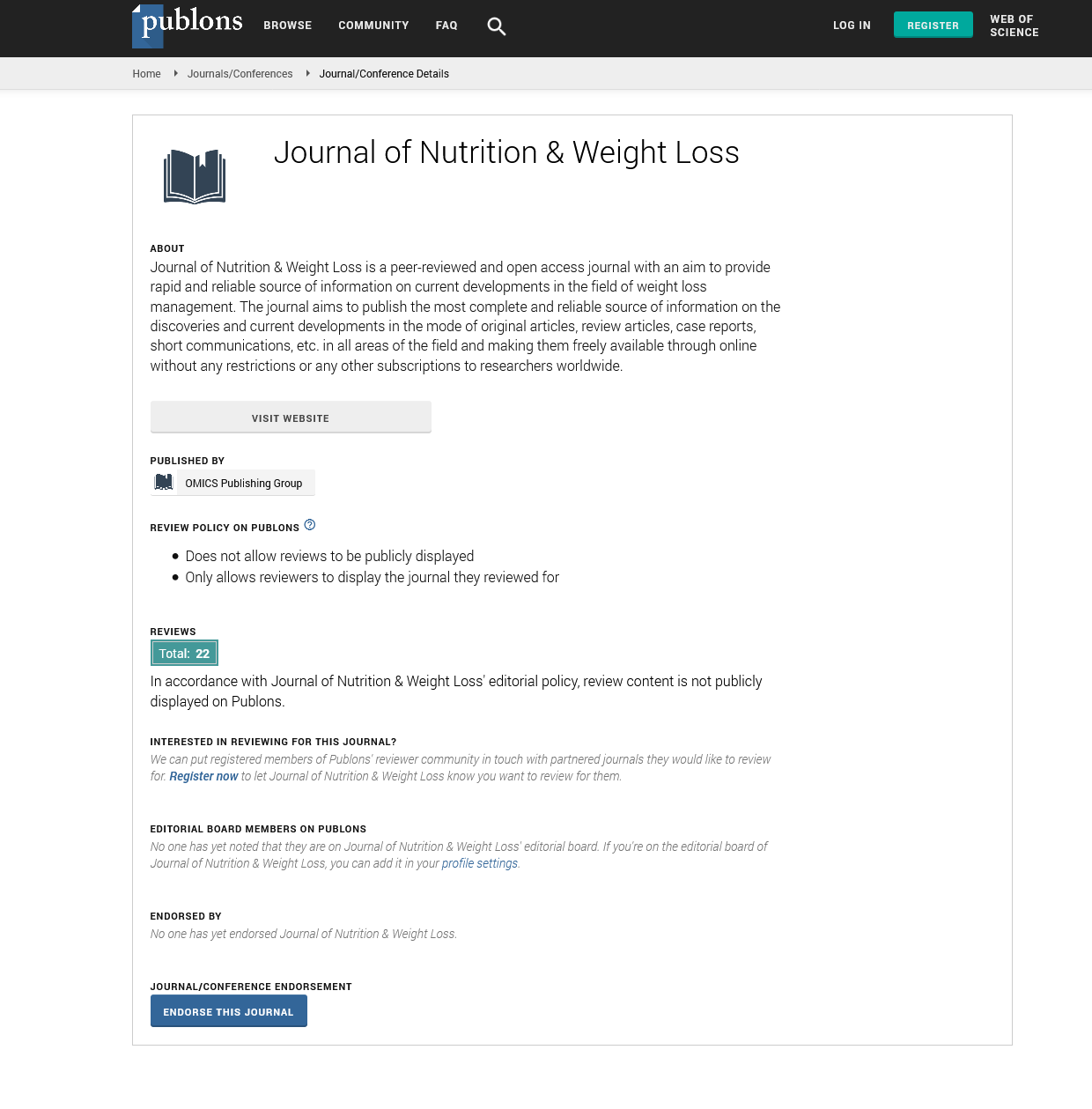Indexed In
- RefSeek
- Hamdard University
- EBSCO A-Z
- Publons
- Euro Pub
- Google Scholar
Useful Links
Share This Page
Journal Flyer

Open Access Journals
- Agri and Aquaculture
- Biochemistry
- Bioinformatics & Systems Biology
- Business & Management
- Chemistry
- Clinical Sciences
- Engineering
- Food & Nutrition
- General Science
- Genetics & Molecular Biology
- Immunology & Microbiology
- Medical Sciences
- Neuroscience & Psychology
- Nursing & Health Care
- Pharmaceutical Sciences
Opinion Article - (2023) Volume 8, Issue 2
A Comprehensive Approach to a Healthy Diet and Weight Reduction
Hala Martin*Received: 15-May-2023, Manuscript No. JNWL-23-22278; Editor assigned: 17-May-2023, Pre QC No. JNWL-23-22278 (PQ); Reviewed: 31-May-2023, QC No. JNWL-23-22278; Revised: 08-Jun-2023, Manuscript No. JNWL-23-22278 (R); Published: 14-Jun-2023, DOI: 10.35248/2593-9793.23.8.167
Description
In today’s world, staying healthy and achieving a balanced weight has become a significant challenge for many people. The rise of unhealthy habits and easily available processed foods has led to a global increase in obesity and related health problems. To counteract this trend, more individuals are now seeking a comprehensive approach to not only lose extra weight but also develop a sustainable and nourishing lifestyle that promotes overall well-being. Instead of depending on quick solutions and strict diets, to achieving a healthy weight involves considering multiple factors and applying a comprehensive method, such as balanced nutrition, regular physical activity, and positive behavior change. This approach recognizes that everyone’s journey towards better health is unique and requires attention to physical, emotional, and psychological aspects.
Maintaining a well-balanced diet and achieving weight loss goals require meticulous portion control. It’s not just about the content of our meals but also the quantity consumed. Even indulging in wholesome foods excessively can result in unwanted weight gain and various health complications. Thus, comprehending and implementing portion control can truly revolutionize our journey towards better health. Research has revealed the positive impact of utilizing portion control plates, which can enhance nutritional awareness among individuals of all ages. Whether in the form of two-dimensional or three-dimensional plates, these ingenious tools have proven effective in selecting appropriate portion sizes. By offering a visual representation of a balanced meal, they assist individuals in understanding the ideal quantity from each food group.
Packaging also plays a pivotal role in portion control. It can quietly help consumers choose healthier options, including reducing portion sizes. Unfortunately, these features often go unnoticed, as food purchasing decisions are typically made automatically.
Therefore, it is important to pay attention to packaging and decipher the valuable information it imparts about portion sizes. Portion control implements, such as utensils and downsized tableware, present opportunities to regulate portion sizes. However, their effectiveness remains a source of debate. Some studies suggest that these tools prove fruitful in weight loss interventions. By encouraging heightened awareness of portion sizes, they empower individuals to make informed decisions regarding their eating habits.
Most dieticians and fitness trainers suggest a portion size that is balanced and appropriate for the individual’s needs. For instance, a typical serving size could be 1/2 cup of cooked pasta or rice, 1-2 cups of vegetables and salad, and 3 cups of nonfat or low-fat dairy products. Simple and structured guidelines regarding portion sizes can lead to significant reductions in waist circumference among this demographic. This highlights that portion control can deliver benefits to a broad spectrum of individuals, extending beyond those solely seeking weight loss.
Nevertheless, it is important to acknowledge that portion control may not work for everyone. Each individual possesses a unique physique, rendering what may work for one person ineffective for another. Elements such as age, gender, activity level, and metabolic rate have the potential to influence an individual’s daily caloric needs and expenditure. Consequently, seeking guidance from a healthcare professional or a registered dietitian prior to embarking on a portion control-based diet.
To conclude, when utilized correctly, portion control wields significant power in facilitating weight loss endeavors. By incorporating it into a well-rounded dietary plan and engaging in regular physical activity, one can construct a sustainable and wholesome weight loss strategy. This comprehensive approach not only enables us to achieve our desired weight loss goals but also fosters overall well-being and vitality.
Citation: Martin H (2023) A Comprehensive Approach to a Healthy Diet and Weight Reduction. J Nutr Weight Loss. 8:167.
Copyright: © 2023 Martin H. This is an open-access article distributed under the terms of the Creative Commons Attribution License, which permits unrestricted use, distribution, and reproduction in any medium, provided the original author and source are credited.


